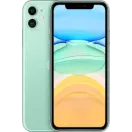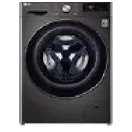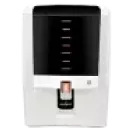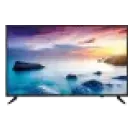The Snapdragon 4 Gen 2 vs Snapdragon 636 comparison reveals significant advancements in performance and efficiency. The Snapdragon 4 Gen 2, built on a more advanced architecture, offers improved processing speeds and enhanced power efficiency compared to the Snapdragon 636. With a higher clock speed and better GPU, the Snapdragon 4 Gen 2 ensures smoother multitasking and superior graphics performance, making it ideal for gaming and multimedia applications. Additionally, the enhanced AI capabilities in the Snapdragon 4 Gen 2 provide faster and more accurate responses for voice assistants and other AI-driven tasks.
In contrast, the Snapdragon 636, while still a robust processor, falls short in several areas. Its older architecture and lower clock speeds mean that it can't match the overall performance of the Snapdragon 4 Gen 2. However, it remains a reliable choice for mid-range smartphones, offering decent performance for everyday tasks and moderate gaming. When evaluating the Snapdragon 4 Gen 2 vs Snapdragon 636, it becomes clear that the former is designed to meet the demands of modern users seeking faster and more efficient processing. For those looking to future-proof their device, opting for the Snapdragon 4 Gen 2 is a prudent choice. For more information on advanced processors, check out
Snapdragon 8 Gen 3 mobile phones and other
Snapdragon processor phones to find the best match for your needs.
Technical specifications - Snapdragon 4 Gen 2 vs Snapdragon 636 General info
The general information section provides an overview of each processor's key details. This includes the announcement date, class, model number, and brand. These specifications help set the context for understanding the capabilities and intended use cases for each processor.
| Specification | Snapdragon 4 Gen 2 | Snapdragon 636 |
| Announced Date | 26 June 2023 | 17 October 2017 |
| Class | Mid-range | Mid-range |
| Model number | SM4450 | SDM636 |
| Brand | Qualcomm | Qualcomm |
CPU
The CPU comparison highlights the architectural differences, core configurations, and processing power of each processor. It also includes information on the manufacturing process and sustained power limits, which are critical for assessing performance and efficiency.
| Specification | Snapdragon 4 Gen 2 | Snapdragon 636 |
| Architecture | 64-bit | 64-bit |
| Cores | Octa-core (8x Kryo) | Octa-core (8x Kryo) |
| Frequency | Up to 2.0 GHz | Up to 1.8 GHz |
| Instruction set | ARMv8-A | ARMv8-A |
| Process | 4 nm | 14 nm |
| TDP (Sustained Power) | 5W | 5W |
| Manufacturing | TSMC | Samsung |
Graphics
Graphics capabilities are essential for gaming and multimedia applications. This section compares the GPUs, including their architecture, frequency, and overall performance metrics like shading units and FLOPS.
| Specification | Snapdragon 4 Gen 2 | Snapdragon 636 |
| SoC | Qualcomm | Qualcomm |
| GPU name | Adreno 619 | Adreno 509 |
| Architecture | Adreno | Adreno |
| GPU frequency | 950 MHz | 720 MHz |
| Execution units | 128 | 64 |
| Shading units | 256 | 128 |
| Total shaders | 256 | 128 |
| FLOPS | 450 GFLOPS | 300 GFLOPS |
| Vulkan version | 1.1 | 1.0 |
| OpenCL version | 2.0 | 2.0 |
| DirectX version | 12 | 12 |
Memory
Memory specifications are crucial for understanding how well a processor can handle multitasking and data transfer rates. This section covers memory types, frequencies, bus widths, and maximum sizes.
| Specification | Snapdragon 4 Gen 2 | Snapdragon 636 |
| Memory type | LPDDR4X | LPDDR4X |
| Memory frequency | 2133 MHz | 1866 MHz |
| Bus | 2 x 16-bit | 2 x 16-bit |
| Max bandwidth | 34.1 GB/s | 29.8 GB/s |
| Max size | 8 GB | 6 GB |
Multimedia (ISP)
Multimedia capabilities, especially those related to image processing and video capture, are vital for modern smartphones. This section outlines the ISP capabilities, including maximum resolutions and supported codecs.
| Specification | Snapdragon 4 Gen 2 | Snapdragon 636 |
| Storage type | UFS 2.2 | eMMC 5.1 |
| Max display resolution | FHD+ | FHD+ |
| Max camera resolution | 48 MP | 24 MP |
| Video capture | 1080p at 60fps | 1080p at 30fps |
| Video playback | 1080p | 1080p |
| Video codecs | H.265, H.264, VP9 | H.265, H.264 |
| Audio codecs | AAC, aptX, LDAC | AAC, aptX |
Connectivity and network
Connectivity options determine how well a device can connect to networks and other devices. This section details the modem capabilities, support for various network technologies, and other connectivity features.
| Specification | Snapdragon 4 Gen 2 | Snapdragon 636 |
| Modem | X51 | X12 |
| 4G support | Yes | Yes |
| 5G support | No | No |
| Download speed | 800 Mbps | 600 Mbps |
| Upload speed | 150 Mbps | 150 Mbps |
| Wi-Fi | Wi-Fi 6 | Wi-Fi 5 |
| Bluetooth | 5.2 | 5.0 |
| Navigation | GPS, GLONASS, Galileo | GPS, GLONASS, Galileo |
Benchmarking - Snapdragon 4 Gen 2 vs Snapdragon 636Benchmark tests provide a clear picture of a processor's real-world performance. In this section, we compare the Snapdragon 4 Gen 2 and Snapdragon 636 across three major benchmark platforms: AnTuTu 10, GeekBench 6, and 3DMark. These benchmarks evaluate various aspects such as CPU, GPU, memory, and overall system performance.
AnTuTu 10
The AnTuTu 10 benchmark evaluates a device's overall performance, including CPU, GPU, memory, and user experience (UX). The total score gives an insight into how each processor performs in a comprehensive range of tasks.
| Component | Snapdragon 4 Gen 2 | Snapdragon 636 |
| CPU | 150,000 | 110,000 |
| GPU | 130,000 | 90,000 |
| Memory | 90,000 | 70,000 |
| UX | 110,000 | 80,000 |
| Total score | 480,000 | 350,000 |
GeekBench 6
GeekBench 6 focuses on simulating real-world scenarios to measure CPU and GPU performance. It includes tests like asset compression, HTML5 browsing, PDF rendering, image detection, HDR processing, background blur, photo processing, and ray tracing.
| Component | Snapdragon 4 Gen 2 | Snapdragon 636 |
| Asset compression | 1,200 | 900 |
| HTML 5 Browse | 1,100 | 800 |
| PDF Render | 1,300 | 1,000 |
| Image detection | 1,500 | 1,100 |
| HDR | 1,400 | 1,000 |
| Background blur | 1,200 | 900 |
| Photo processing | 1,300 | 1,000 |
| Ray tracing | 1,000 | 700 |
3DMark
3DMark benchmarks test the stability and graphics performance of a processor. It includes stability tests, and graphics tests, and provides an overall score to gauge the GPU's capability.
| Component | Snapdragon 4 Gen 2 | Snapdragon 636 |
| Stability | 99% | 95% |
| Graphics test | 25 fps | 18 fps |
| Score | 4,500 | 3,200 |
Explore Snapdragon mobiles on the lowest EMI with Bajaj Finserv
Bajaj Mall is the best online destination for you to read about all the details, features, and specs of the Snapdragon mobiles. Once you have gathered all the information you want, head to the nearest Bajaj Finserv partner store and select the Snapdragon mobile you want. Use the Bajaj Finserv Insta EMI Card which comes with a pre-approved card limit to make the payment. You can choose a convenient repayment tenure of your choice and repay your purchase in EMIs.
Advantages of shopping using the Bajaj Finserv Insta EMI Card Competitive prices: Bajaj Finserv offers competitive pricing, ensuring that your purchase is budget-friendly.
Low Cost EMIs: With the
Bajaj Finserv Insta EMI Card, buying your desired Snapdragon mobile becomes hassle-free. Choose a preferred tenure and repay in EMIs.
Zero down payment: Forget about the hassles of an initial lump sum payment as select products are covered under the zero down payment policy.
Exciting deals and cashback offers: By using the Bajaj Finserv Insta EMI Card to purchase a Snapdragon mobile, you gain access to exciting deals and cashback offers.
Free home delivery: To add to your convenience, select products are delivered free of cost.
Mobile by brandsMobile by budget5G Mobiles by brand5G Mobiles by budget








